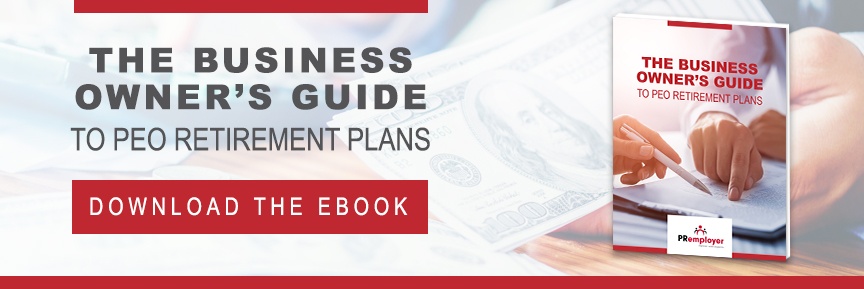Did you know 47% of employees cite retirement benefits as an important reason to stay with their current employers? In spite of this, only 15% of firms with under 100 employees offer a 401k.
However, those numbers change dramatically for businesses that have partnered with a Professional Employment Organization (PEO). Working with a PEO can be one of the keys to affordable, easy-to-handle retirement plans that help employers provide their employees with what they really need for their futures.
Employer Problems
Choosing a Retirement Plan
Choosing a retirement plan by yourself requires careful research. You must consider fees, liability, auditing requirements, and a host of other factors to choose a retirement plan that meets your specific needs and will allow you to offer a plan that meets your employees' goals. It takes considerable time to choose the right plan.
Setting Up Retirement Plans
Some businesses choose to set up their own retirement programs such as 401(k) plans. This involves a set of serious challenges: retirement plans are difficult to set up and maintain, and they often prove extremely expensive. Not only do the plans have substantial compliance requirements, but they may also leave the sponsors with significant financial liability.
One of the top-cited reasons for not offering a retirement plan is that it's too expensive to set up (37%) and that the company doesn't have enough administrative resources (22%). All too often, this means that employees of those companies do not have the ability to use employer-sponsored retirement programs.
So, how do PEOs change that dynamic?
PEOs Solve Retirement Challenges
Working with a PEO can help you handle many of the challenges associated with choosing or maintaining your own 401k. PEOs can:
- Handle the investment-related responsibilities associated with the 401k account.
- Manage the duties associated with maintaining those accounts.
- Decrease the costs associated with 401k accounts for employees.
- Deposit employee contributions, so you don't have to worry about it.
- Maintain adequate ERISA fidelity bond coverage
- Select a 401k provider that works for your company's unique needs
- Take on fiduciary liability
Nearly all PEOs (98%) offer some type of retirement plan for their partners. This makes it much easier for employers to participate: between 40 and 52% of PEO clients with less than 50 employees participate in retirement plans. Businesses without a PEO, on the other hand, have a participation rate between 13% and 23%.
PEOs also take away much of the administrative hassle associated with retirement plans, making it possible for more companies to offer the retirement plans their employees need without drowning in administrative burdens. This is another reason many PEO clients are more likely to offer retirement benefits to their employees.
PEOs give companies an advantage in recruiting and retaining talent in many different ways--including through the offering of retirement plans. These retirement plans are often lower in set-up and administrative costs than the ones that rival companies of comparable sizes can offer their employees. That gives PEO clients a hiring and retention advantage over the competition which otherwise would not be possible.

